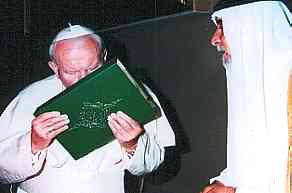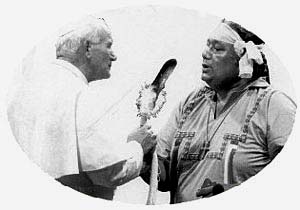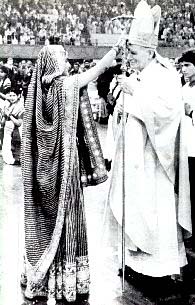
Thousands celebrate Orthodox Easter in Jerusalem
By IAN DEITCH
JERUSALEM (AP) - A sea of flames illuminated Christianity's holiest shrine, the Church of the Holy Sepulcher, as thousands of pilgrims took part Saturday in the holy fire ceremony, a key event in the Orthodox Easter rituals.
The event passed peacefully despite plans by protesters to block the participation of the Greek Orthodox Patriarch, Irineos I.
Demonstrators, who object to the Patriarch's alleged role in a controversial land deal, were kept away by the hundreds of Israeli police who set up barricades throughout the alleys leading to the Jerusalem holy site.
The shrine, marking the site where tradition says Jesus was crucified and buried, was filled with thousands of pilgrims. Hundreds more waited outside for the holy flames to emerge.
At the start of the ceremony, church leaders descended into the underground burial area. The faithful clutched their bundles of unlit candles and torches while waiting in the darkened church for a flame to emerge from the tomb.
Some Christians believe the flame appears spontaneously, as a message from Jesus that he has not forgotten his followers.
When church leaders, including Irineos, emerged with a lighted torch, a cheer arose, and the flames were passed around, illuminating the church within seconds.
Tensions were high ahead of the ceremony.
The Greek Orthodox Church is in turmoil over a deal in which the church reportedly leased prime property in disputed east Jerusalem to Jewish investors.
The alleged land deal is politically explosive because Israel claims all of Jerusalem, while Palestinians claim east Jerusalem as the capital of a future state. Jewish land purchases in east Jerusalem are seen as bolstering Israel's claim to that section of the city.
In the past the ceremony has also been a flashpoint between different Orthodox denominations, who have argued over protocol at the ceremony.
About a dozen Greek and Armenian clergymen briefly scuffled over who would be first to emerge with the flames, but they were quickly pulled apart by Israeli police stationed inside the church.
Custody of the Church of the Holy Sepulcher is shared by a number of denominations that jealously guard their responsibilities under a fragile network of agreements hammered out over the last millennia.
"Every year there is always tight security, but maybe this year it is even tighter because of the land deal," said Matthew Doll, 30, a pilgrim who waited outside the church.
Protesters had vowed to bar Irineos from the ceremony, but were kept away by the police, said Dimitri Diliani, the head of a Palestinian Christian coalition who have been spearheading the protests.
The reported deal has stirred huge anger among Palestinians who feel betrayed by the church.
At a rare news conference last month, Irineos told reporters he was unaware of the alleged transactions, and that he was not involved in any deal which was reportedly signed by Nikos Papadimas, the church financial officer who vanished three months ago.
Papadimas is wanted in Greece after Greek Orthodox Church officials in Athens accused him of absconding with church funds worth more than $1 million Cdn. His wife is wanted on separate charges of money laundering. Separately, a European arrest warrant has been issued against Papadimas, Greek officials said.
But as the flames emerged from the tomb, church bells pealed and tensions melted away.
"This is one of the most beautiful and spiritual experience of my life," said Jonathan Parish,42, of Boston. "I have dreamt of being in the presence of the holy fire for a long time," he said.

AP Photo, via Minor Clergy

















